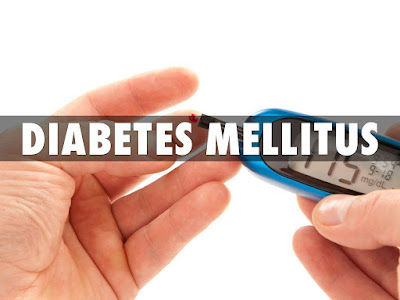Diabetes Mellitus is a metabolic disorder characterize by the
presence of chronic hyperglycemia due to the greater or lesser metabolism of
carbohydrates, proteins and lipids.
 |
| 100 normal,, 125 prediabetic range of Glucose |
Pathophysiology of DM
Pathophysiology of DM varies accordingly with the type of
Diabetes. Four type of Diabetes are
Type 1 (Insulin
Dependent)
It is called insulin dependent because in type one diabetes
insulin level drops and insulin is required for the therapy with positive response
for insulin. Insulin dependent Diabetes
is of two type
Type 1A (Autoimmune type) is type of
diabetes in which antibodies are produced against the beta cells of Islets of
langharhans. Immune form is most common among
type 1 diabetes. Occur mainly in pre 30s but onset can occur at any age.
Genetic defects are defined with mutation in genes leading to loss of function
of those gene products which regulate the expression of several proteins
causing the deletion of self-reactive T-cells.
Pathogenesis of Type 1A DM due to the factors below:-
1)
Beta
cells act as autoantigens and activate CD4 T cells, bringing about immune
destruction of pancreatic b-cells by autoimmune phenomena. Further it may be
due to the triger of autoimmune appear due to some infectious or environmental
factors which specifically target b-cells. In type 1A the immunological
bio-markers are positive and can be used as for Test tools.
Type 1B is of idiopathic cause in which the
insulinopenia occur due to some unknown cause. The biomarkers are absent with
no evidence of immunological reaction.
Type 2 DM (Insulin Independent)
Type 2 DM pathophysiology include increased resistance and
impaired secretions from the b cells. Genetic tendencies are linking it with
ancestors because of its prevalence in individuals having familial history.
Obesity is considered to be playing main role in insulin resistance. Insulin
resistance is the most pronounced factor which is associated with Type 2 DM. Impairment
of insulin secretion is also a factors which lead to mild to moderate reduction
of blood insulin concentration. Increased hepatic gluconeogenesis is also occur
in the initial period of the disease.
Type 3 Diabetes (other specific causes)
In this type of diabetes causes of elevated blood glucose
sugar are pancreatectomy, pancreatitis and drug therapies etc.
Type 4 DM (Gestational DM)
GDM is defined as any abnormality in glucose level noted for
the first time during pregnancy. Occur mainly and more pronounced in last
trimester of pregnancy. During pregnancy placenta and placental hormones create
an insulin resistance.







appreciable
ReplyDelete